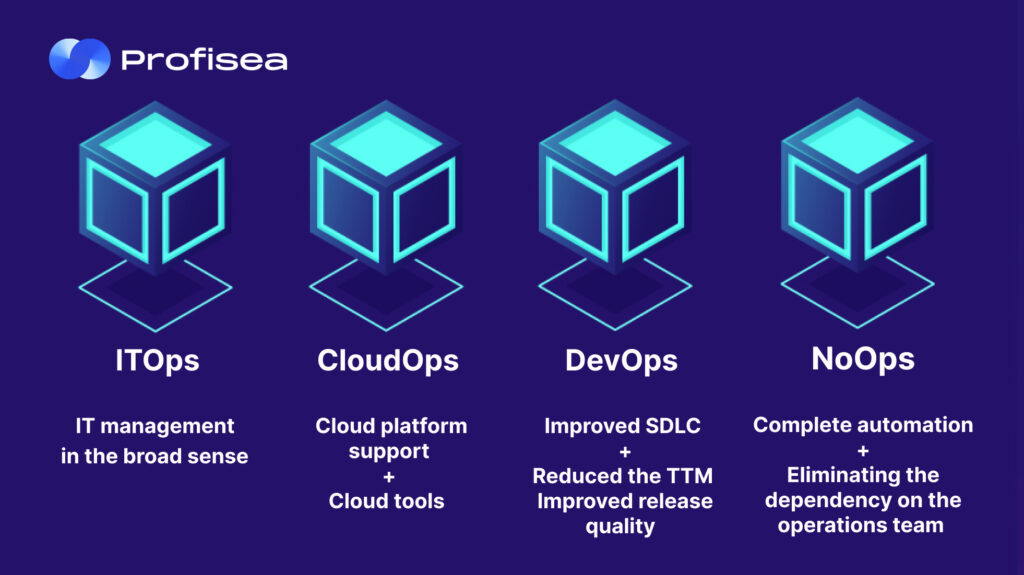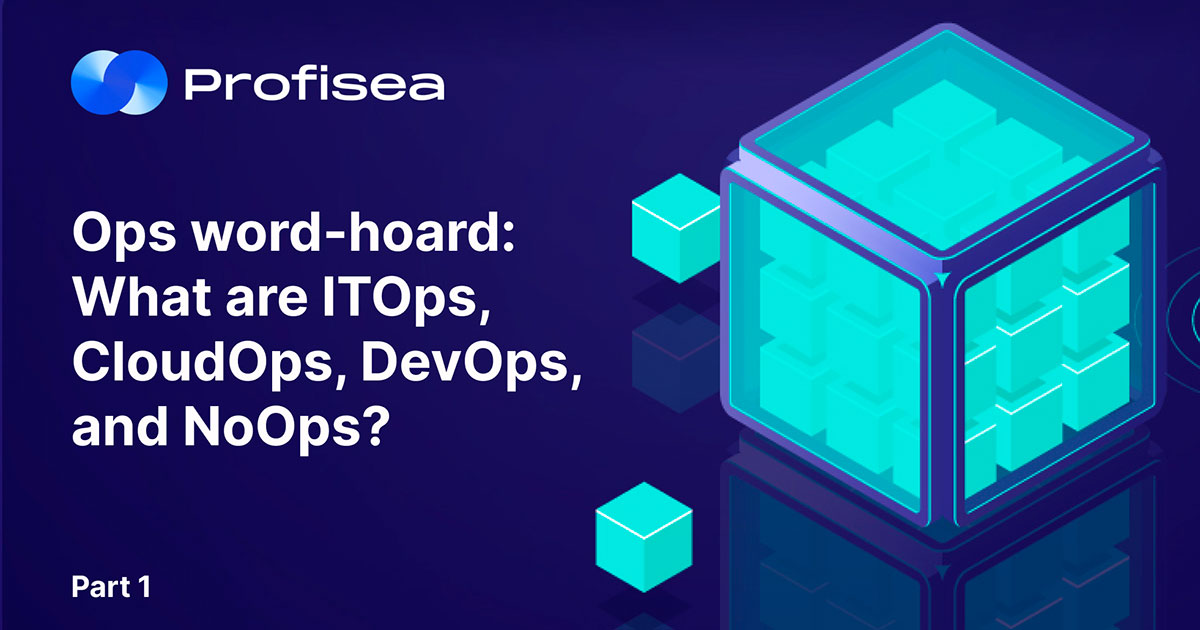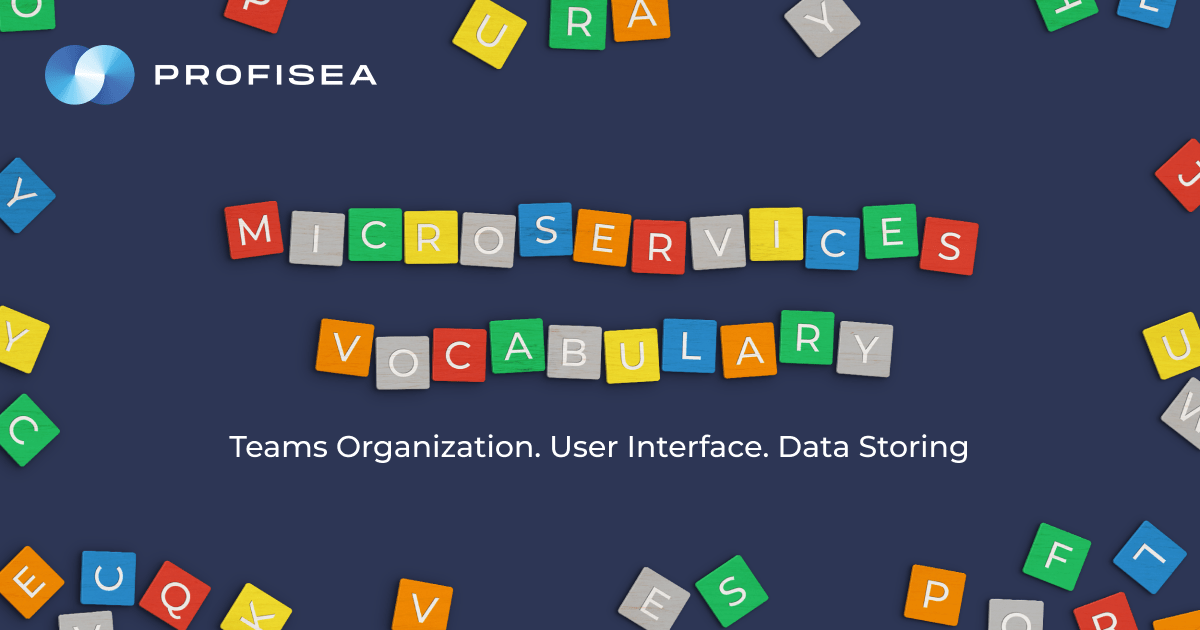Ops word-hoard: What are ITOps, CloudOps, DevOps, and NoOps? Part 1
In the last decade, different terms related to operations have taken the IT world by storm. The good old days — when the number of IT domains could be counted on the fingers of one hand and the IT department was separate from business processes — are gone, never to return.
Instead of simple rules, we have dozens of buzzwords that lead to growing confusion and frustration among managers, directors, and CTOs. For example, who are NoOps and MLOps specialists, and what do they do? Moreover, people misuse the Ops terms without understanding them, leading to even more confusion and frustration.
This Ops thesaurus aims to help you know the trendy terminology around IT operations, evaluate your business needs, and make better decisions.
Defining Ops
With so many IT terms being tossed around, it’s essential to define them before you can decide what comes next for you and your business. So we’ll focus on the prominent ones to clarify the crucial things about CloudOps, DevOps, ITOps, DevSecOps, FinOps, NoOps, MLOps, and AIOps. While we can’t promise to transform you into an IT expert, you’ll find something interesting here.
What is ITOps?
“ITOps,” or “Information Technology Operations,” isn’t new. However, it’s commonly used to refer to all IT-related operations broadly. ITOps is responsible for leveraging technologies and delivering and supporting applications, services, and tools required to run an organization.
The goals of ITOps typically include:
Infrastructure Management — to focus on the setup, provisioning, maintenance, and updating of all the hardware and software in the company to be sure that existing infrastructure and systems run smoothly and new components are incorporated harmoniously;
- Development Management — to concentrate on providing software development teams with all necessary to succeed, including the preparation of the guidelines, workflows, and security standards;
- Security Management — to keep the hardware and software secure, manage access control, adopt security best practices and ensure that all processes and the components of the environment comply with security standards;
- Problem Management — to handle outages and cyberattacks, prepare disaster recovery plans and perform them when necessary, and help desk services.
To summarize, ITOps can be explained as a set of practices implemented by the IT department to perform IT management in the most general sense. And this is precisely why ITOps could be criticized and is considered outdated. While very specific, they are sometimes ineffective from a development point of view as they can’t meet the pace of today’s business and quickly adjust to the constantly changing technological landscape.
What is CloudOps?
CloudOps can be explained similarly to ITOps but considering the cloud. While ITOps is meant for traditional data centers, CloudOps relates only to the cloud.
According to Gartner, end-user spending on public cloud services is expected to grow 20.4% and reach $494.7 billion in 2022. With increasing cloud adoption, CloudOps grew in popularity as well. Nowadays, many organizations need to organize and optimize their resources more productively, using public and private cloud solutions and leveraging hybrid clouds. CloudOps differs from ITOps as applications and data management in the cloud require more specific up-to-date skills, tools, and technologies. CloudOps is focused on:
- cloud-specific flexible provisioning;
- scalability of environments;
- built-in task automation;
- maximizing uptime;
- eliminating service outages for seamless operation.
As a set of best practices and procedures, CloudOps helps migrate systems to the cloud successfully and reap its benefits, such as power and scalability. CloudOps facilitates automatic software delivery, app, and server management using the cloud.
What is DevOps?
A survey conducted by the DevOps Institute on upskilling the DevOps enterprise skills in 2021 concluded that DevOps teams are vital for a successful software-powered organization, but what is DevOps? By definition, ‘DevOps’ (‘Development + Operations’) can be explained as a combination of software application development and IT operations, with all the best practices, approaches, and methodologies to bolster them.
The DevOps practices are intended to:
- implement an effective CI/CD pipeline;
- streamline the software development life cycle (SDLC);
- enhance the response to market needs;
- shorten the mean time to repair;
- improve release quality;
- reduce the time to market (TTM).
With DevOps, organizations follow a continuous work cycle consisting of the following steps:
DevOps highlights the value of people and a change in the IT culture, which focuses on the fast provision of IT services, implementing Agile and Lean practices in the context of a system‑oriented approach.
What is NoOps?
By definition, NoOps (No Operations) aims to completely automate the deployment, monitoring, and management of the applications and infrastructure to focus on software development. The NoOps model reduces the need for interaction between developers and operations through extreme automation. The two main factors behind the NoOps concept are the increasing automation of IT and cloud computing. With NoOps, everything that could be automated is already automated. One example of this is serverless computing in the cloud platform.
The aim of the NoOps model is to:
- allow organizations to leverage the full power of the cloud, including CaaS (Container as a Service) and FaaS (Function as a Service);
- eliminate the additional labor required to support systems, letting to save money on maintenance;
- concentrate on business results by turning attention to tasks that deliver value to customers and eliminating the dependency on the operations team.
With all the potential benefits, NoOps is still considered a theoretical approach by many, as it assumes particular circumstances and the use of serverless computing in most cases. After all, it can be said that NoOps isn’t going to replace, for example, DevOps, but rather to act as a model, with the potential, where possible, of further improving and streamlining the application implementation process.
To summarize, let’s look at the models discussed below.

To be continued
ITOps, DevOps, CloudOps, and NoOps describe different approaches to meet an organization’s IT needs and structuring IT teams. Each has additional features and goals, and enterprises can adopt them depending on their priorities. In the following parts of our vocabulary, we’ll explore the most exciting Ops terms — DevSecOps, MLOps, AIOps, FinOps, and try to take a closer look at how they relate to each other. Stay tuned!




